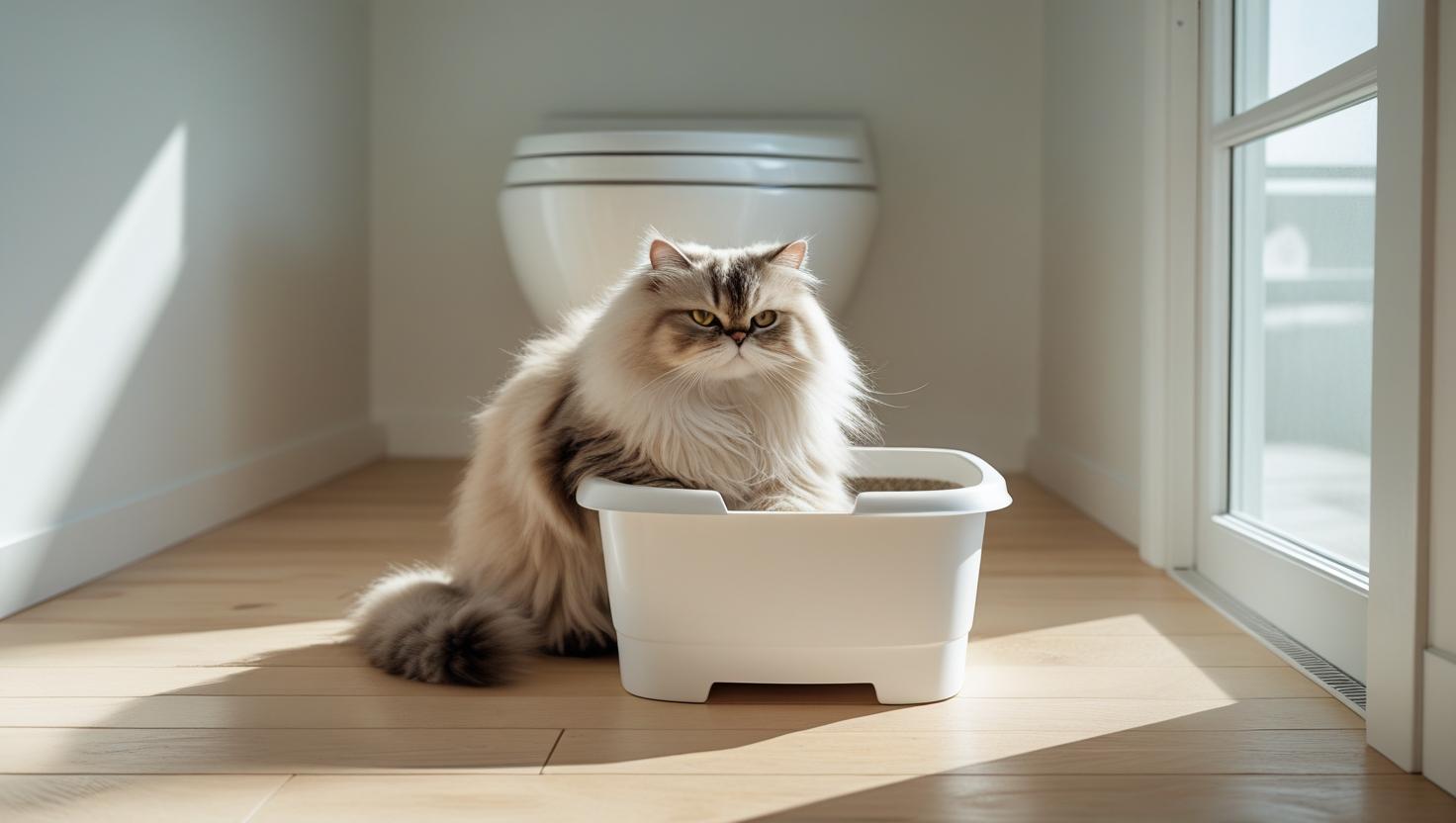Keeping the litter box clean is not just to avoid bad smells; it is important for your cat’s health and happiness. If the box is dirty, your cat may become stressed, refuse to use it, and even become ill or act strangely. Taking care of the box is more than just scooping; it’s about understanding what your cat needs and creating good habits.
1. Choosing the Right Litter Box and Location
Choose a litter box that is large enough for your cat to move around, turn, and do its business without feeling cramped. Older cats or small kittens need boxes with low sides for easy access, while high sides help prevent litter from scattering for adult, agile cats. Do not use covers if your cat dislikes enclosed spaces, and always place the litter box in a quiet spot: away from food, away from noisy areas, and out of the way of people. Cats prefer calm for their activities.
2. Which Litter Works Best?
Unscented, low-dust, clumping litter is the best choice. Scented litters might seem appealing to owners, but many cats dislike them. Look for a soft litter that is comfortable for their paws. Ideally, the litter should be about 5 cm deep so your cat can dig and cover easily.
3. Creating a Lifelong Cleaning Routine
Clean the litter box at least once a day, more often if you have multiple cats. Whenever you remove waste, add more litter to keep it deep and absorbent. Doing this every day helps your cat continue using the box and allows you to notice if it becomes unwell earlier.
4. Monthly and Weekly Maintenance
Every week (or sooner if the box is very dirty), empty the entire tray and clean it with hot water and a mild, unscented soap or just baking soda. Harsh chemicals or ammonia-based products can drive your cat away. Always dry thoroughly before adding new litter. Consistently doing this helps prevent the buildup of bacteria and bad odors that regular cleaning cannot eliminate.
5. How to Keep the Litter Box Clean and Odor-Free
Sprinkle some baking soda before adding fresh litter to help control bad odors. Place a mat under and around the box to catch stray litter, and shake or vacuum this area daily. If litter falls on the carpet or floor, vacuum immediately. Once a month, use a pet-safe steam cleaner for a deep clean.
For accidents outside the box, enzyme-based cleaners break down biological stains and odors far better than regular detergents. Avoid any products with ammonia, which can mimic the smell of urine and confuse your cat.
6. Sharing Space: How to Have Multiple Cats at Home
To maintain peace, follow the rule “one litter box per cat, plus one extra.” Having multiple boxes in different locations gives each cat a private space and options, helping to minimize stress and the chance of soiling elsewhere.
7. Should You Choose an Automatic Litter Box?
Self-cleaning litter boxes can be good for busy households, but they may scare cats that dislike noise. Manually scooping the litter box is reliable and comfortable. Plus, it allows you to monitor your cat’s health.
8. Health Cues and Supportive Habits
Observe your cat’s behavior in the litter box: changes in frequency, abnormal color, straining, or accidents indicate the need for a vet visit. Sometimes, avoiding the box is the only way your cat can express that something is wrong.
Also, always ensure the box is in a quiet, easily accessible spot. If your cat suddenly refuses to use it, revisit these basics—try new litters, move the box, or change styles until your cat feels secure again.
Checklist for Litter Box Success
Unscented, clumping, paw-friendly litter Depth of at least 5 cm for digging
- Scoop once a day; replenish as needed
- Wash the box completely every week with unscented detergent
Baking soda for subtle, safe odor control
- One box per cat, with an extra, placed in quiet, convenient spots
Check for changes in toilet habits and respond quickly
Important Tips:
A clean litter box is a daily act of care, helping your cat live comfortably and allowing you to notice changes before they become problems. With the right space and routine, your feline friend will always have a comfortable and inviting spot, promoting a healthier and happier home for everyone.
